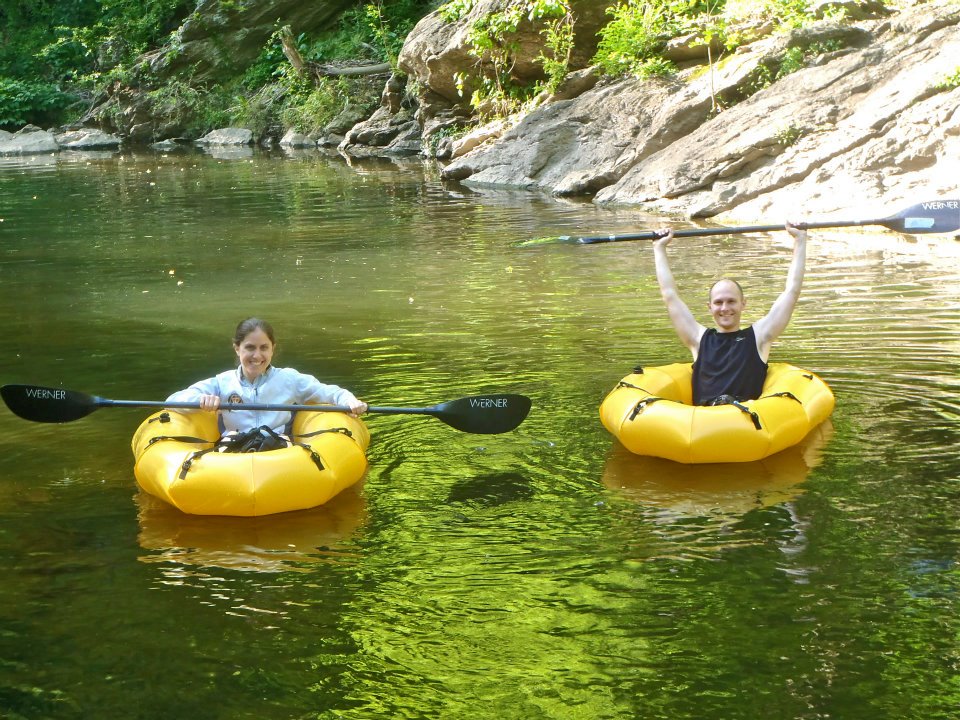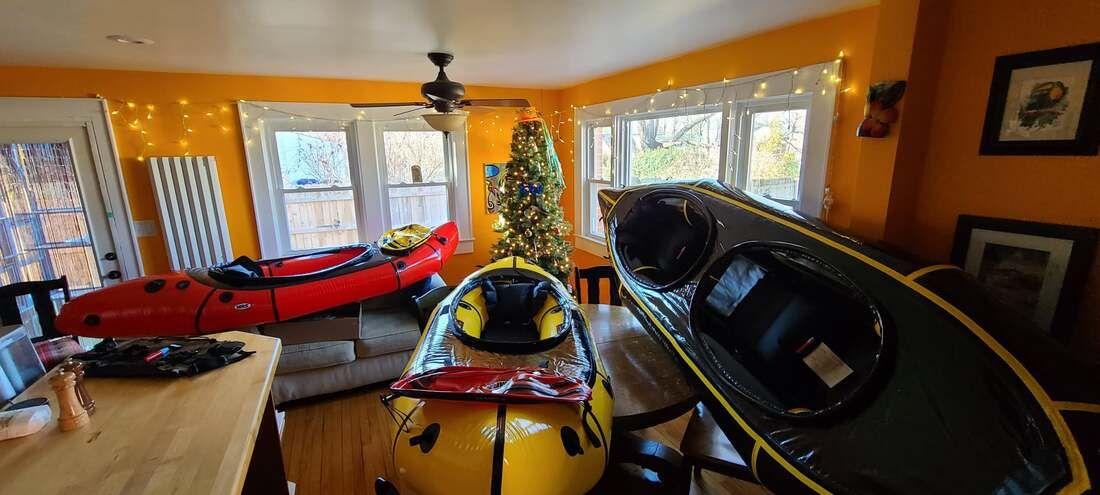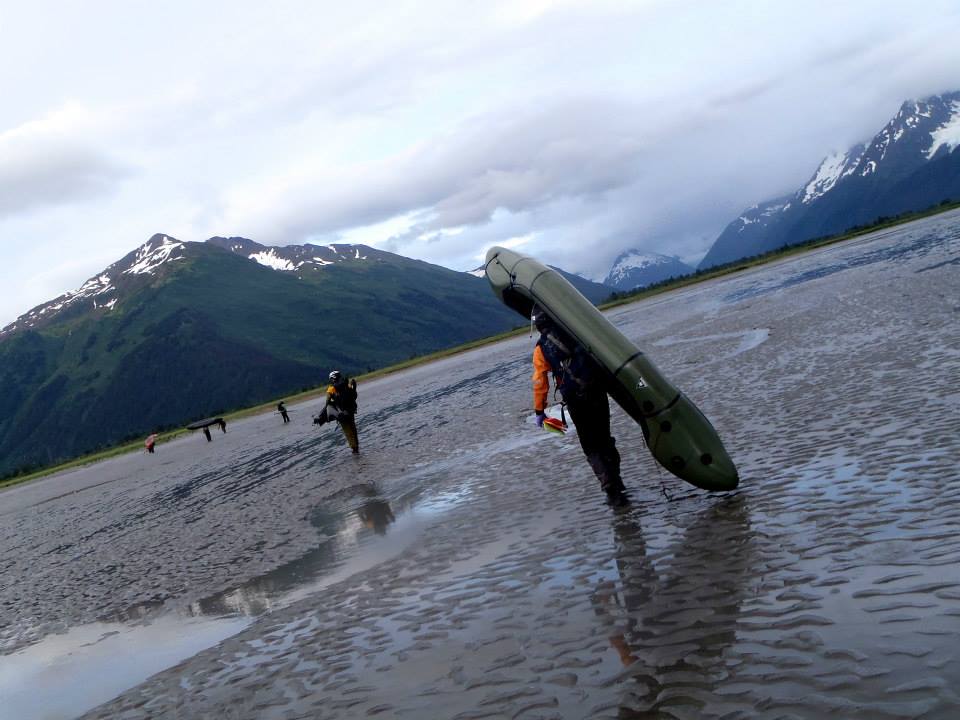|
A decade ago, few adventure racers had ever seen a packraft, and many had not even heard about the sport that traces its roots back to Alaskan backcountry exploration and the famous Alaskan Mountain Wilderness Classic. In the ensuing years, the sport has taken off and is now commonplace in many expedition-length events in the US. Even shorter events are beginning to integrate packrafting into their courses. Along the way, there has emerged a cottage industry around the sport, with multiple companies producing great boats to match different price points and many outfitters offering rental service to racers and adventurers alike. Unlike other equipment, investing in a raft can be intimidating: compared to bikes, headlamps, or other standard items found in a gear closet, it can be hard to test out packrafts or even get your hands and eyes on them to assess them before laying down the credit card. In this edition of the Expedition Playbook, we aim to offer guidance on some of the basics, but we will not be dissecting nuances like seats, materials, gear storage, and inflators (manual and electronic; yes, there are electronic inflators teams are using). For more information on some of these details and more (including DIY options), check out this article. And as always, ask around. Many experienced racers have invested in boats at this point, and most have experience with different brands. Online reviews can be helpful, but beware: many packrafters are not racing with their boats, so what might work for the average rafter might not translate well to AR and racing. Before we dive in: one elephant in the room: WHICH raft should we buy? We will save specific recommendations for the end of the article, but here are some considerations worth exploring. costPerhaps the number one question that comes up for the new packrafter is: how much money do I need to invest in this equipment? It’s a fair question, and even cheaper packrafts can carry a degree of sticker shock, as they will still run you at least several hundred dollars. Some considerations:
So… what about the cheaper boats? Are you saying I have to shell out four figures for a boat? Not necessarily. Consider the following, and if you can check off these boxes, then you might be fine with a more affordable option.
Two further considerations as you decide whether and how to invest in rafts. First: many seasoned racers started their packrafting careers in more affordable boats, convincing themselves (and being convinced online) that there isn’t much difference between lower-end and higher-end brands. Often, these racers ended up reinvesting in new rafts within one or two races, after seeing how different they actually perform on the water. If you have plenty of disposable income, maybe this isn’t a big deal, but investing in a $500 boat only to go out and buy an $800-1000+ boat within a year or two is a bummer. Second: Especially in day-long events, you’ll see some teams invest in what literally might be a pool toy. Odds are good that this isn’t what race directors had in mind when they were designing the packraft section of their race. If it happens to be a relatively superficial and short section, you may be able to get away with a $40 beach raft from Amazon, but more likely than not, your experience probably won’t end well. doubles vs singles Another common question that comes up: do we buy a tandem raft or a single
Of course, all races are different, and unless you really are a gear junkie, you probably aren’t going to invest in multiple rafts for different conditions (though many experienced racers do, over the course of several years). Some additional general considerations:
*Expedition Oregon is the clear exception to these norms. The race often includes more technical paddling. It’s safe to assume that teams you should be more prepared for this race than most, and if there is ever a time to consider extra gear like spray decks, it’s here. TrainingIf you have considerable paddling experience, transitioning to a packraft may be relatively straight forward. They will handle differently than kayaks and canoes, but you will likely be able to adjust using your experience quickly enough. Even then, it is valuable to seek out instruction and guidance from experienced packrafters. And if you are jumping into packrafting without much paddling experience, you absolutely should consider some training. In the Northeast, Eric Caravella recently started Packrafting Adventures. Training like this is invaluable, and Eric is offering discounted rates to registrants of a number of adventure races that are including packrafting in 2022, including the Endless Mountains. Reach out to us or to Eric for details. While packrafting is still a fledgling discipline under the American Canoe Association, a growing number of instructors often are able to set up courses for teams or small groups if there are no available classes. the goodsOK. “Just tell me what to buy,” you say. We’ll begin at the beginning: the history of adventure racing, in the USA at least, has long been intertwined with Alpacka Raft. For over a decade Alpacka dominated the packrafting industry. There were a few other companies offering more affordable options that some swore performed nearly as well. They didn’t. In these boats racers often encounted torn-out bottoms, ripped seams, poor tracking, and heavier weights (while still being more damage-prone). In short, no one could hang with Alpacka. In recent years, however, a number of new and exciting options have hit the market, which has opened up all sorts of new, and more complicated, decisions for adventurers. In 2022, you will see a more diverse array of packrafts at any given race, even among the more competitive and experienced teams. For one summary of some of the recognized brands, check out the relevant section in this article. At Rootstock Racing, we are excited about our new partnership with Microrafting USA. MRS packrafts have cemented themselves as a go-to raft on the international racing scene; many elite racers in the South Pacific, Asia, and Europe rate these as their top choice for both racing and adventuring. Their Barracuda model, in particular, has emerged as a perfect boat for adventure racers. Fast, sleek, and roomy (by packraft standards) this tandem boat has risen to the top of the packraft market. For racers looking for the perfect expedition race tandem, MRS offers two versions of the Barracuda – a standard model and one with a spraydeck option. As new partners with MRS, we will be updating this page with a link to an official review of the Barracuda once we are able to launch it for its maiden voyage. By all existing accounts, though, this boat is unrivaled by any other model currently on the market. concluding thoughtsAs always, start where you are. If you only plan to raft once a year, perhaps renting a higher-end boat is a better investment than purchasing a lower-end one. Packrafting Adventures and Back Country Packrafts are both great options for rentals. If you see yourself rafting more regularly, think about your needs, interests, and how much you want to invest. Financial considerations aside, know that packrafting is not quite as straightforward as it seems. It takes time to figure out how to pack efficiently, how to inflate and deflate the boats quickly, how to stow your gear once you hit the water, and how to share a small boat if paddling a tandem. The boat will handle differently, especially in whitewater, from your standard canoe or kayak. Showing up to a race without any experience will likely result in a fair degree of frustration.
1 Comment
3/3/2022 08:52:33 am
Thank you guys and gals so much for these articles.
Reply
Your comment will be posted after it is approved.
Leave a Reply. |



 RSS Feed
RSS Feed
